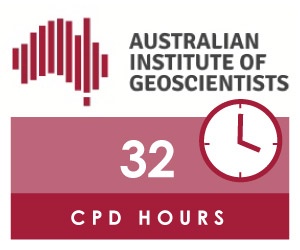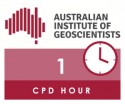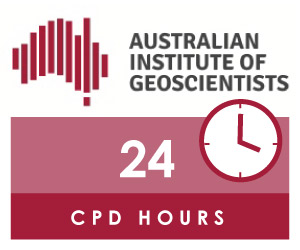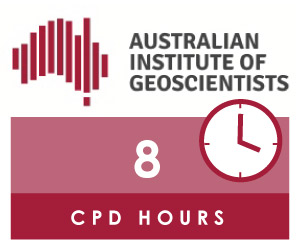 PACRIM 2015 – REGISTER NOW, Early bird registration closes 31 January 2015
PACRIM 2015 – REGISTER NOW, Early bird registration closes 31 January 2015
18-21 March 2015, Conrad Hotel, Hong Kong, China
AIG is pleased to announce we will be supporting PACRIM 2015. PACRIM is a quadrennial congress that focuses on research, exploration and development of mineral deposits around the Pacific Rim. Its appeal extends far and wide to geologists, geophysicists, geochemists exploring in the Pacific Rim and people interested in the mineralisation processes of active tectonic margins, and those developing projects following discovery in these regions.
PACRIM 2015 will present over 80 technical abstracts plus additional keynote presentations over a three day period with a special Geology and Exploration of China Seminar to be held on the fourth day. The program will also include networking functions, pre- and post-congress workshops, technical tours, students program and optional sightseeing tours.
AIG members are eligible for the congress supporter discounted rates to attend the congress in March next year!
For further information and to keep up to date with the latest information as it becomes available please register your interest via the congress website.
Click here to download the conference brochure.
3 year appointment – with further employment subject to funding and needs of the CET
Salary range: Level C $110,822 – $127,788 p.a. (Level of appointment will be commensurate with experience) Plus 17% superannuation
The University of Western Australia (UWA) is a member of Australia’s prestigious Group of Eight and ranked among the top 100 universities (ranked 88th in the world) with a broad and balanced coverage of disciplines in the arts, sciences and major professions.
For the past 100 years, UWA has contributed significantly to the intellectual, cultural and economic development of the State of Western Australia and the nation as a whole.
The CET is an applied research centre that has strong support from the minerals industry and whose vision is to be the international leader in exploration targeting. The CET is an unincorporated joint venture between The University of Western Australia, Curtin University and the Minerals industry.
An endowed position within CET has been established in memory of Dr Rod Hammond and Dr Bruce Nisbet, two great applied geoscientists who had known each other both as work colleagues and friends and who tragically died within months of each other in 2006. Each had an exceptional grasp of the important connections between economic mineral and geological systems and how those connections could be applied in exploration targeting.
Dr Nisbet firmly believed that to have success in future exploration it was critical to perpetuate this learning and research methodology in a world class integrated teaching environment.
The endowed research-intensive position within the CET will focus on mentoring the next generation of geoscientists in the integration of fieldwork, structural geophysical interpretation and application to understanding the structural evolution of mineral systems and application to exploration targeting. You will be expected to develop and deliver applied and fundamental research projects in this field in collaboration with industry partners, to attract research funding from industry and/or competitive grant programs, to teach into the national Minerals Council of Australia coursework MSc program run through CET, to run training programs for industry and to attract and mentor research MSc and PhD students. Some assistance with relocation expenses (if applicable) may be negotiated.
Benefits include generous superannuation and leave provisions and fares to Perth (if applicable) for appointee and dependants along with a removal allowance. These and other benefits will be specified in the offer of employment.
Contact Professor T. Campbell McCuaig on (08) 6488 2667 or email: campbell.mccuaig@uwa.edu.au.
Closing date: Friday, 31st October 2014
Application Details:
Applications must be submitted online. Full details of the position’s responsibilities and the selection criteria are outlined in the position description and applicants should clearly demonstrate they meet the selection criteria. Please see the position description prior to applying:
 In the first quarter of 2014 the AIG Australian Geoscientist Employment survey recorded the highest levels of unemployment and underemployment since the surveys commenced in 2008. In june, the employment situation has improved slightly but self-employed geoscientists were clearly still suffering depressed demand of their services. These results demonstrated the value of monitoring geoscientist employment in Australia on a regular basis.
In the first quarter of 2014 the AIG Australian Geoscientist Employment survey recorded the highest levels of unemployment and underemployment since the surveys commenced in 2008. In june, the employment situation has improved slightly but self-employed geoscientists were clearly still suffering depressed demand of their services. These results demonstrated the value of monitoring geoscientist employment in Australia on a regular basis.
With your support, this survey has become to be regarded as a trusted indicator of geoscientist employment specifically, and an indicator of the health of Australia’s exploration and mining sector more generally. We need your support, for a few minutes every three to six months to maintain the value of this series of surveys.
The surveys provide “hard data” that is used in representations to government, and for use in a range of other areas by both AIG and industry representative bodies with which AIG shares the survey results.
The few minutes of your time spent completing the survey really helps to make a difference to the standing and knowledge of our profession.
Click here to complete the survey.
The survey will remain open for submissions until midnight, 18 October 2014.
 AIG’s South Australia Branch hydrogeology group will be holding their inaugural meeting on Wednesday 1st October at the Wakefield Hotel, Adelaide. The speaker will be Tavis Kleinig (Water Quality Branch of the EPA, Senior Hydrogeologist) and his talk topic is ‘The EPA and Groundwater – From AMD to UCG’.
AIG’s South Australia Branch hydrogeology group will be holding their inaugural meeting on Wednesday 1st October at the Wakefield Hotel, Adelaide. The speaker will be Tavis Kleinig (Water Quality Branch of the EPA, Senior Hydrogeologist) and his talk topic is ‘The EPA and Groundwater – From AMD to UCG’.
The success of the recent South Australia Branch “Groundwater in Mining” conference demonstrated the need for a hydrogeology group, particularly in South Australia.
“Tavis Kleinig’s talk is a must for exploration and mining geologists in South Australia, for obvious reasons” according to AIG South Australia Branch Chairman Graham Teale. “His talk will focus on the Environment Protection Authority’s (EPA’s) broad role in the assessment of groundwater, and the assessment of mining and oil and gas projects with potential to impact groundwater.”
Tavis will provide a summary of a recent project, the State Groundwater Quality Monitoring, Evaluation and Reporting Program (SGWQMERP for short!). To keep things topical (and hopefully more interesting) Tavis will briefly discuss the EPA’s role in the recent Clovelly Park investigation, Rex Hillside, Unconventional Gas (UCG) in the South East, and finally introduce everyone to stygofauna!
Click here for more information regarding the meeting
Kalgoorlie, home of the Super Pit, is the perfect location for the Australian Institute of Geoscientists (AIG) Gold14@Kalgoorlie Symposium to be held between 8-10 October. The symposium will be a truly international event, with delegates attending from Africa, the Americas, Asia, Europe and the Pacific and bringing together notable geoscientists from academia and the gold industry.
“This conference is shaping up to be the most important gold geoscience conference in Australia since Bicentennial Gold88 in 1988” said the symposium Organizing Committee Chairman and industry consultant Julian Vearncombe. The highlight is a 3-day conference of talks and posters on various aspects of gold deposits, provinces and exploration.
Keynote speaker, Ed Eshuys, known for his involvement in the Plutonic, Bronzewing and Jundee gold discoveries in WA in the 1990s, will open the conference with an address on the importance of exploration to the Australian economy.
“Australia’s gold exploration story is one of great success” Neil Phillips, a consultant and Adjunct Professor with the University of Melbourne said. “Claims that gold exploration has not been successful are potentially dangerous and may lead to misallocation of exploration and research funding. The Government data shows that Australia is not only replacing the gold that it mines but systematically adding to the inventory.”
“Since 1979, Australia has achieved what no other country has in this period, discovering 16,500 tonnes of gold at a cost of $40 per ounce. This low exploration cost is a measure of how Australia’s exploration industry has been unequivocally successful in discovering gold, especially when compared to today’s gold price of around US$1220.” Professor Phillips said.
Recent Australian gold discoveries include DeGrussa copper-gold deposit (WA), Tropicana deposit (WA), McPhillamys deposit (NSW) and Andy Well (WA). The symposium will also hear of recent successes at Pegasus, and Invincible near Kalgoorlie.
In the last ten years Australia has added 6,000 t of gold to its Economic Demonstrated Resource (EDR, Geoscience Australia, 2012). At the end of 2012, Australia’s EDR of gold was about 9,909 t. This figure suggests that there are enough resources for the next 30 years of mining at the current production rate.
Gold is currently a primary output of about 75 mining and processing operations in Australia; and these mines produce about 250 tonnes of gold a year, almost 10% of world production, and second only to China.
The goal of Gold14@Kalgoorlie is to present the innovative geological practices and technological innovations that are contributing to the continued success of an industry that employs 25,000 personnel across Australia. Neil Phillips sums up “The exploration industry’s aim is discovering better quality gold ounces which are higher grade, easier to extract and better located”. “Whether such ounces are in new areas (greenfields) or established areas (brownfields) is of secondary importance. Commonly being near to existing infrastructure can be a big advantage.”
The Symposium runs from 8-10 October 2014 and will be accompanied by both pre- and post-conferece field excursions and workshops.
For further information contact Julian Vearncombe in Perth
e: julian@sjsresource.com.au
t: 0437477220
 Are you registered to attend the symposium? You can download the extended abstracts volume now to read prior to the symposium sessions. Your symposium registration information contains the password required to unlock these files for reading.
Are you registered to attend the symposium? You can download the extended abstracts volume now to read prior to the symposium sessions. Your symposium registration information contains the password required to unlock these files for reading.
Low Resolution Copy (ideal for iPads and other tablets)
High Resolution Copy delivered in three parts (Part 1) (Part 2) (Part 3)
Thinking of attending? There’s still time to register. Click here for details.
Minespace is a new service, being established in West Perth, which will provide on-demand, pay as you go access to office space, meeting rooms, training rooms and a suite of technical software, some of which will be accessible to subscribers via a cloud computing service. The company’s services are designed to appeal to both self-employed mining professionals who need a space to interact with clients, or those visiting Perth.
Minespace will be launched on 3rd October at the company’s new facility, Level 1, 1292 Hay Street, West Perth. Click here for further details or visit www.minespace.com.au
Susan Kihn, a Mining Talent Expert at CareerMine, based in Vancouver Canada, has analysed data extracted exclusively from the 2014 CareerMine Salary Survey results, to compare what geologists were earning in 2012 and what they are now earning in 2014.
Even with the downturn in mining worldwide which has seen massive job losses as a result of mining companies downsizing, putting mines into maintenance mode or closing down, it appears not all is bad for geologists working in mining in Australia. Besides other mining professions, we know that there are a lot of geologists who have lost their jobs worldwide and in Australia.
Read more on the CareerMine web site.
UNCOVER – Progress in the vision for exploration geosciences and mineral discovery in Australia
The UNCOVER initiative in our national mineral exploration endeavours, formulated under the aegis of the Australian Academy of Sciences aims to build a strategy which will find new Tier 1 mineral deposits under the 80% of Australia where favourable geology lies below regolith or other barren cover. This will be facilitated by increasing the national conversation between industry, research providers (academia and CSIRO), government surveys, and policy-development arms of government, in order to enhance the communication, direction and focus of new technologies, models and exploration programs.
The UNCOVER Executive Committee last April welcomed The Honourable Martin Ferguson AM (a past Minister for Resources and Energy in the Rudd-Gillard governments) as Patron. In this role we believe Mr Ferguson will greatly assist in our liason with policy-makers in government.
The UNCOVER initiative has progressed this year on four fronts. Firstly, publication of the Summit presentations by the ASEG, at request of the UNCOVER Executive, meets the need for an archiving of the Summit material in a citeable, discoverable and downloadable form, and we have achieved this by use of the Preview format which assures that CSIRO Publishing will host this resource as a permanent archive, accessible through standard databases and web searches. Two summaries linked at the head of the list of contents are vital reading for all explorationists; the first summarises strategy and emerging geosciences priorities as identified in the Summit, while the second summarises the findings of the post-Summit cover thickness mapping workshop. The synergies of airborne gravity gradiometry with airborne EM (AEM) for determining regolith thickness, and of both active and passive seismic methods with ground EM data are points well made in this review.
Secondly, an UNCOVER Geoscience Committee has been formed under chairmanship of Steve Beresford, Chief Geologist of First Quantum Minerals Ltd. One of the roles of the Geoscience Committee will be to identify and recommend endorsement of projects, in particular “headline projects” which may become the focus of the UNCOVER initiative.
Thirdly, AMIRA International has launched a Road-Map initiative as part of Project P1162: Unlocking Australia’s Hidden Potential, under the leadership of Robbie Rowe of NextGen Geological Pty Ltd. This initiative will provide an opportunity for industry to contribute to a blueprint for addressing the challenges and gaps in knowledge, technology capability together with an assessment of the research capacity (human resources and infrastructure) required to improve the exploration success rate in areas of post mineral cover. Further details are available here. AMIRA advise that this project P1162 has now received the necessary threshold funding and has commenced with an impressive total of 31 companies and government agencies signed up.
Fourthly, Geoscience Australia and the Australian state and Northern Territory geological surveys have embraced the UNCOVER initiative as a major part of their support for the mineral exploration industry. Richard Blewett, Group Leader Mineral Systems for Geoscience Australia, gives an overview of the effort, currently beginning with studies in the Stavely area under Murray Basin cover of western Victoria, and continuing with studies in the Thomson Orogen of northern NSW, Queensland and Northern Territory. These projects have the involvement of a number of geoscientists within Geoscience Australia, plus additional input from state surveys and universities. See more here.
Preview (the news magazine of the Australian Society of Exploration Geophysicists) this month publishes online sixty presentations from the UNCOVER Summit and post-Summit Workshop, held in Adelaide 31 March-2 April.
Michael Asten
Australian Geoscience Council Representative on the UNCOVER Executive
(Michael Asten is a professor of geophysics at Monash University, Melbourne. michael.asten@monash.edu)
Coal Log Review – Feedback to Committee Sought
It is now two years since CoalLog, a proposed Borehole Data Standard for the Australian Coal Industry, funded by an ACARP project, was released. Many Australian coal companies have implemented the CoalLog codes and formats for data collection as well to convert historical data. Even though CoalLog was developed by numerous experienced coal geologists over many meetings, it was anticipated that some minor modifications may be needed that would only become apparent once people started to use it.
The CoalLog review committee will be meeting on the 18th September in Brisbane. The Stage 2 developments (training manual, graphic symbols, stratigraphic and seam codes, etc.) will be presented and any proposed modifications to the system (additional fields or codes) will be discussed.
The committee is keen to get feedback from users on any issues or suggested improvements, and from non-users on any impediments to implementation.
Please send any comments or contributions prior to the meeting to:
Brett Larkin at brett@geocheck.com.au and David Green.
 BIG Data, Inspiring Information and Strategic Knowledge, is being presented in Perth WA 23-24 March 2015 by AIG and Geoscientists Symposia.
BIG Data, Inspiring Information and Strategic Knowledge, is being presented in Perth WA 23-24 March 2015 by AIG and Geoscientists Symposia.
This international symposium will examine data management and effective data conversion to knowledge that delivers growth in the exploration and mining sectors.
The latest symposium circular is available here
If you are interested in presenting a paper, exhibiting or sponsoring the symposium contact training@geosymposia.com.au